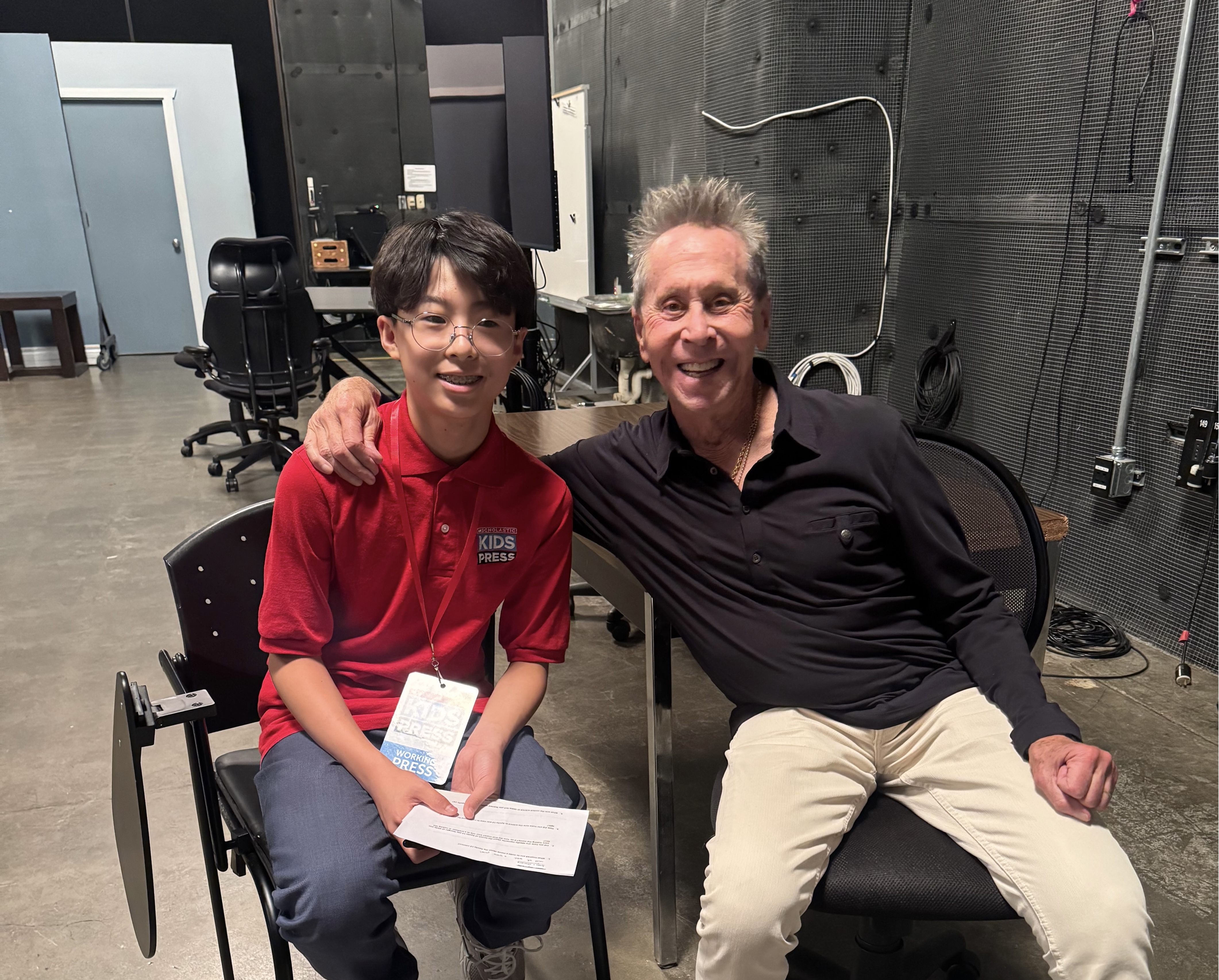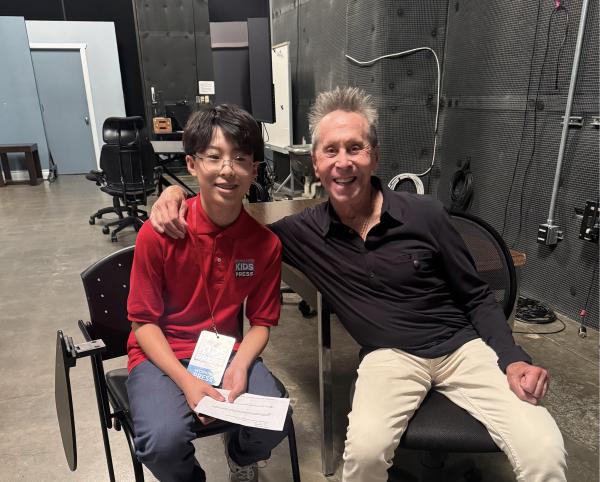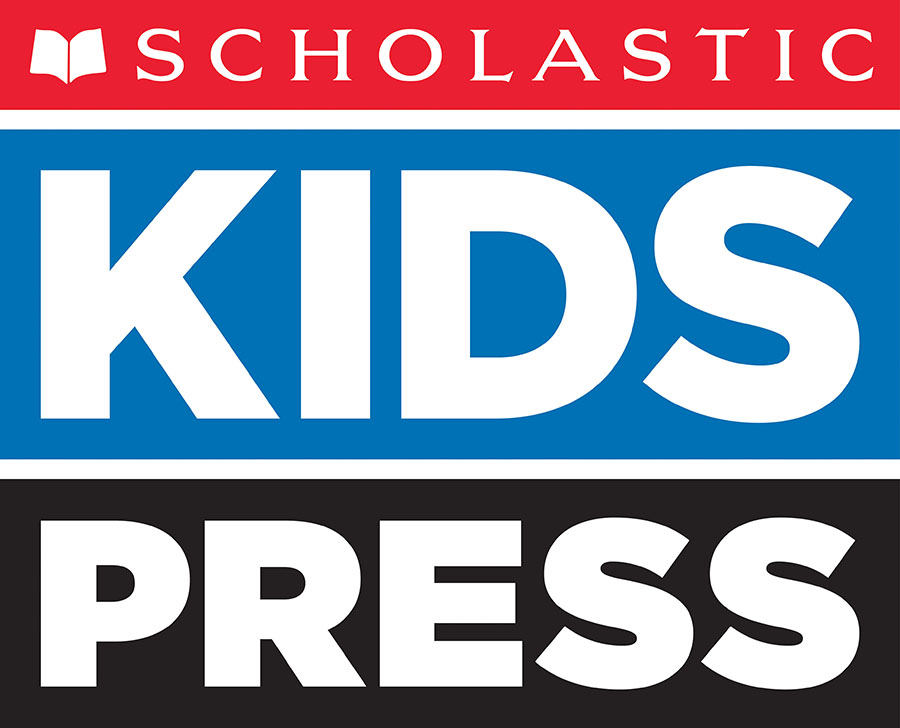KID REPORTERS’ NOTEBOOK
“Houston, we have a problem.”: What Apollo 13 Teaches Us about Science and Humanity Today


Kid Reporter Aiden An interviews Brian Grazer, award-winning producer of Apollo 13, at a screening of the film (photo credit: Madeline Louden)
55 years since the launch of the space mission and 30 years since the release of the film, the story of Apollo 13 remains one to remember.
The NASA mission Apollo 13 launched on April 11, 1970. Aboard the spacecraft were three astronauts: Jim Lovell, Fred Haise, and Jack Swigert. Unfortunately, an oxygen tank exploded in the middle of the flight, making a lunar landing impossible. The astronauts had to abandon the Command Module and take shelter in Aquarius, the Lunar Module. They used the limited power in Aquarius’s engine to slingshot around the Moon and safely return to Earth.
Apollo 13 became known as a “successful failure.” Although the astronauts did not walk on the Moon, they and the scientists at Mission Control accomplished something many consider even more extraordinary by safely bringing the astronauts home.
Award-winning producer of Apollo 13 Brian Grazer answers questions at a Q&A session after a screening of Apollo 13 (photo credit: Hayeon Lee)
The 30th Anniversary Re-release of Apollo 13
To celebrate the film’s 30th anniversary, Apollo 13 was re-released in IMAX theaters nationwide for a week in September. Scholastic Kid Reporter Aiden An attended a screening of the film at the University of Southern California followed by a Q&A with Brian Grazer, award-winning producer of the film.
When asked about his inspiration, Grazer said, “It’s a survival story. But more than that for me, it’s about human capacity, what man is able to do singularly to get things done and to survive.” He added, “It’s about intellectual ingenuity, creative ingenuity, [and] scientific ingenuity.”
Apollo 13 and the Spirit of Problem-Solving and STEM
Ron Howard, award-winning director of Apollo 13, believes that powerful human stories like that of the mission can also spark an interest in STEM for students today. “That’s what storytelling does,” he said. “Whether it’s movies, television, books, comics, graphic novels, [or] sometimes even songs, [they] can transport audience members into spaces physically or mentally that they never really imagined going before.”
On how STEM connects to navigating complex challenges, Lauren Morse, Senior Education Editor for Scholastic STEAM Magazines+, said, “STEM is so important! It’s all about asking questions, figuring things out, and solving problems.” Apollo 13 demonstrates how the astronauts and scientists at Mission Control implemented this theory in especially difficult circumstances. Morse added, “It’s incredibly empowering for students to see how their knowledge and creativity can tackle a challenge.”
Howard believes sharing the science of Apollo 13 through the film also serves to highlight the power of human teamwork and communication. “NASA is a place that, then and now, has a great culture of team problem-solving. There are a lot of brilliant people, but they all debate, challenge each other, and yet work as a team to try to find solutions, and there’s never been a more dramatic example of that than the Apollo 13 mission.”
